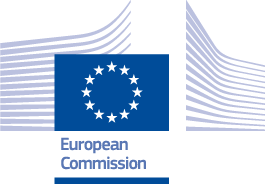Impact of DC electric fields on interlaminar and intercolumnar cortical network dynamics
Maria V Sanchez-Vives (PI), Joana Covelo
Electrical (e.g. tDCS) and magnetic stimulation (TMS) are used extensively to modulate cortical and subcortical activity in the clinical realm. However, the understanding of the mechanisms of action of such interventions on cortical dynamics is still limited. We will explore how DC electric fields modulate interlaminar and intercolumnar synchronization and functional connectivity at the mesoscopic level. To this end, prefrontal, somatosensory, motor and visual cortex cortical activity will be modulated by electric fields, pharmacology and optopharmacology. The objectives include (i) to define a collection of measures (synchronization in different frequency bands across near and distant locations, functional connectivity and others) in basal conditions, (ii) to explore modulation by DC fields, (iii) to bridge with the use of brain electrical stimulation in medical applications.Since the beginning of this project, the research goals have evolved, including now a wider range of experimental techniques and topics of discussion than initially proposed. Electrical (e.g. tDCS, tACS) and magnetic stimulation (TMS) are used extensively to modulate cortical and subcortical activity in the clinical realm. However, the understanding of the mechanisms of action of such interventions on cortical dynamics is still limited. In this project, we have been exploring how direct current (DC) and alternating current (AC) electric fields (EF) and electromagnetic fields modulate cortical dynamics at the mesoscopic level. Our aim is to achieve a precise temporal and spatial modulation of activity with exogenous fields and to enhance our mechanistic insights on this action. This is important from a basic research point of view, since it gives us information about the cellular and network dynamics of emergent patterns, plus it has a potential therapeutic value. To this end, we use cortical brain slices in vitro expressing spontaneous slow wave activity or chemically-evoked dynamical states (Figure 1).

Figure 1. Cortical Dynamics. To explore the modulation of cortical activity with exogenous fields, we resorted to cortical brain slices in vitro expressing spontaneous slow wave activity or chemically-evoked dynamical states. Pre-epileptic discharges were induced through bath application of the GABAA receptor antagonist Bicuculline Methiodide (0.8 µM BMI). Bath application of Norepinephrine (NE) and Carbachol (CCh) increased the excitability of the network, resulting in awake-like activity. For each case, traces represent the local field potential (LFP), the filtered LFP (highpass at 200Hz) and the logarithmic of the multi-unit activity (logMUA), which illustrates the population firing rate.
The final objectives of this project include (i) to define a collection of measures of cortical activity in different dynamical states (spontaneous slow wave activity, epileptiform activity, and awake-like activity), (ii) to explore modulation by electromagnetic fields with and without nanoparticles, (iii) to bridge with the use of brain electrical and magnetic stimulation in medical applications. The main expected outcome is to obtain detailed information of how physiological -and eventually, pathological- cortical activity is modulated by exogenous electric fields and to generate information valuable both for basic cortical physiology and for medical applications.
Within this paradigm, we have explored (among others) the potential suppressive effect of DC fields on epileptiform activity, the effect of EF orientation on modulation and the dynamical responses of cortical activity to AC stimulation (sinusoidal pattern), with our main findings being:
- Epileptiform discharges can be precisely modulated by DC electric fields (Figure 2).
- EF orientation is critical, such that an EF has no impact on cortical activity if perpendicular to the apical dendrite. This confirms the dipolar nature of the columnar structure.
- Entrainment is a multiscale phenomenon that can only be achieved within a certain range of the stimulation parameters (Figure 3).
- EFs can modulate excitability during awake-like activity.
- Electromagnetic nanoparticles have demonstrated a potential neuromodulatory effect, reducing the magnetic field intensity threshold required for the modulation of cortical activity.
- Excitability of human slices can be modulated by EFs and GABAA blockade.

Figure 2. Epileptiform discharges can be precisely modulated by DC electric fields. DC fields were applied with two Ag-AgCl electrodes perpendicular to the apical dendrite to slices expressing pre-epileptic and epileptiform discharges due to bath application of 0.8 µM BMI. Multi-unit activity traces from full-blown epileptiform discharges (0.8 µM BMI) during control (0 V/m, top) and during DC stimulation with positive and negative fields (2 V/m and 5 V/m). Positive fields induce an increase in burst frequency and negative fields a decrease in burst frequency, reaching almost total suppression of epileptiform activity at -5 V/m.

Figure 3. Sinusoidal modulation of cortical dynamics. Representative example of modulation of cortical activity (population firing rate) by AC fields with different frequencies (0.05-1Hz). Next to each trace, an illustration of the phase locking values between the stimulating signal and the cortical activity for each frequency of stimulation. We can observe entrainment of the ongoing oscillations to the stimulating frequency at 0.5Hz and 1Hz.
Last update: November 20, 2023

 European School of Network Neuroscience
European School of Network Neuroscience